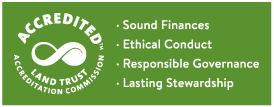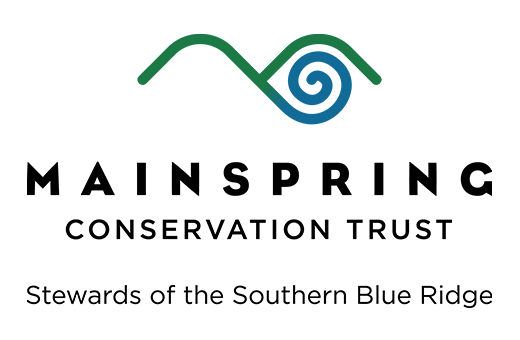We are proud to announce Mainspring Conservation Trust as the new name for this 18-year-old nonprofit, effective January 1, 2016. The name is the result of a process that began more than four years ago. After countless hours, hundreds of name choices, and numerous discussions, the LTLT Board of Directors voted to adopt this new name at its June retreat.
WHY CHANGE?
Our project area expanded.
When LTLT formed in 1997, its primary geographic area was along the Little Tennessee River. By 2006, LTLT had expanded beyond the upper Little Tennessee River watershed. As requests for land conservation started coming in from surrounding counties, LTLT increased its service area to include first the Tuckasegee and then the Hiwassee watersheds. LTLT now works in six western North Carolina counties and in Rabun County, Georgia.
Our work has broadened.
Traditional land trust projects will always be at the heart of what we do, but our mission doesn’t end there. In the very early years we developed a sustainable forest management program designed to help landowners be good stewards of their forests.We also emphasized restoration of both land and water. When the Little Tennessee Watershed Association merged with LTLT in 2012, we expanded further with new programs related to water, education and research.
Ever try explaining that the Little Tennessee River is not in Tennessee?
As a nonprofit seeking both private and public support, time spent explaining where we are located often got in the way of explaining the importance of what we do. Potential donors unfamiliar with western North Carolina often thought we were located in Tennessee, while many landowners in the region outside of Macon County didn’t realize our work also included conservation and education in the places special to them.
Our name needed to grow with us.
Originally founded as the Nikwasi Land Trust, this organization officially changed its name to the Land Trust for the Little Tennessee in 1999. That’s a mouthful to say! The long name soon became known as LTLT, which is simple and easy for an insider, but very confusing to someone who is not familiar with the land trust. Moving to a name that will not become an acronym will make it easier to tell our story of what we do in the Southern Blue Ridge, without getting tied up in letters or long titles.
WHAT’S A MAINSPRING?
If you’re over the age of 50, you are probably familiar with the term as it relates to a watch (the old-school kind, the ones our grandfathers carried in their vest pockets). A mainspring is the principal spring that keeps a mechanism moving.
Another definition is even more relevant to LTLT’s work: a mainspring is “something that plays a principal part in motivating or maintaining a movement, process, or activity,” a driving force, a prime mover, a reason, a generator, an impetus.
Exactly what we are for conservation in the western North Carolina mountains.
NEW NAME + NEW LOGO

Mainspring Conservation Trust’s logo is simple and clean. Using the two colors most representative of what we value – blue for water, green for land – the logo showcases the mountains we all love, the water running under and through them, and a round “spring.”
BUT I HATE CHANGE!
Change can be difficult, but it’s a necessary part of moving forward. We are passionate about this organization’s impact in this area and we know you are, too. That’s why we want to emphasize that a change in the name and logo does NOT change our mission, our focus, or our priorities.
• Mainspring Conservation Trust will carry on LTLT’s legacy and continue to conserve land and water.
• Mainspring Conservation Trust will continue to partner with agencies and individuals to promote a strong economy and smart development.
• Mainspring Conservation Trust will continue to ensure that the natural beauty, ecological and cultural integrity, and rural character of our region are preserved.
• Mainspring Conservation Trust will continue to provide opportunities for private landowners to learn about best forest management practices, practical road building, and invasive plant control.
• Mainspring Conservation Trust will keep prioritizing youth education so a new generation of passionate nature lovers will grow.
We will continue with the wise strategic planning and visionary thinking that grew LTLT out of its own name, and into Mainspring Conservation Trust.


 FRANKLIN – Quick: Where is the Land Trust for the Little Tennessee located?
FRANKLIN – Quick: Where is the Land Trust for the Little Tennessee located?
